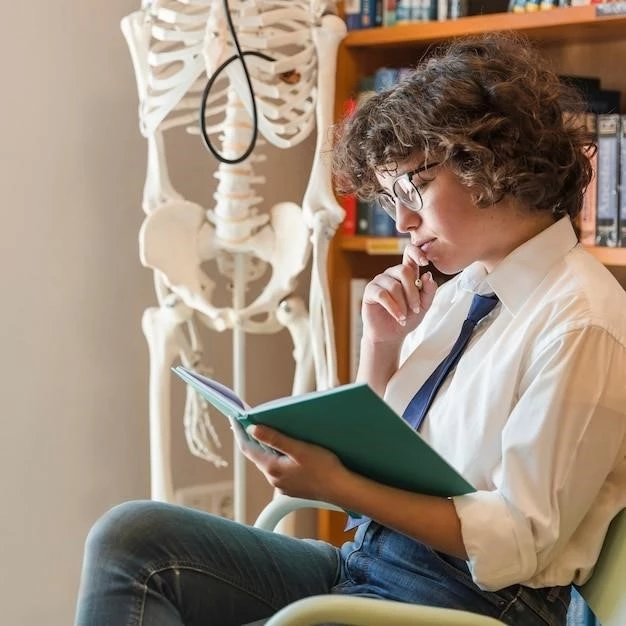Introduction to Idiopathic Adolescent Scoliosis
Idiopathic adolescent scoliosis is a spinal deformity common in teenagers, characterized by an unknown cause and genetic factors affecting skeletal growth.
Definition and Overview
Idiopathic adolescent scoliosis is a condition characterized by an abnormal lateral curvature of the spine that typically develops during the growth spurt before puberty, affecting individuals between the ages of 10 and 18. The curvature of the spine in scoliosis can vary widely in severity, with the progression of the condition influenced by factors such as skeletal growth and genetic predisposition. While the exact cause of idiopathic adolescent scoliosis remains unknown, it is believed to involve a complex interplay of genetic factors. Early detection is crucial for effective management, as the condition can lead to significant spinal deformity if left untreated. Treatment options range from conservative approaches such as brace treatment to surgical interventions like spinal fusion, depending on the severity and progression of the spinal curvature. Regular monitoring by an orthopedic specialist is essential to track the progression of the curvature and determine the most appropriate management plan for each individual case. Complications such as back pain and neurological issues may arise in severe cases and require specialized care and rehabilitation to address.
Key Characteristics
Idiopathic adolescent scoliosis presents with key characteristics such as an abnormal lateral curvature of the spine, typically seen during the growth spurt before puberty. The condition often manifests asymmetry in the shoulders and waist, with one shoulder blade protruding more than the other. In some cases, a visible spinal curvature or rib hump may be apparent when the individual bends forward, indicating spinal misalignment; Pain or discomfort in the back, particularly during prolonged sitting or standing, can also be a common symptom. As scoliosis progresses, it may lead to postural changes and affect the overall alignment of the spine. Monitoring the Cobb angle, which measures the degree of spinal curvature, is essential to track the progression of idiopathic adolescent scoliosis and guide treatment decisions. Early detection of the condition through routine screenings or physical examinations is crucial to implement timely interventions and prevent further spinal deformity.
Diagnosis and Classification
Diagnosis of idiopathic adolescent scoliosis involves assessing the curvature of the spine using the Cobb angle measurement. Classification is based on the severity and progression for appropriate management.
Cobb Angle Measurement
The Cobb angle measurement is a critical aspect of diagnosing and monitoring idiopathic adolescent scoliosis. This angle quantifies the degree of spinal curvature by assessing the deviation from the normal alignment of the vertebrae. It is determined by drawing perpendicular lines from the uppermost vertebra tilted towards the convex side of the curve and the lowermost vertebra inclined towards the concave side of the curve. The angles formed at the intersections of these lines provide an objective measure of the curvature severity. Monitoring changes in the Cobb angle over time enables healthcare professionals to evaluate the progression of scoliosis and make informed decisions regarding the appropriate treatment strategies, whether through conservative measures like brace treatment or surgical interventions like spinal fusion.
Progression Monitoring
Progression monitoring is crucial in managing idiopathic adolescent scoliosis. Regular assessments of the Cobb angle through imaging studies like X-rays are essential to track changes in spinal curvature over time. Healthcare providers use these measurements to determine the rate of progression and adjust treatment plans accordingly. Factors such as the age of the patient, skeletal maturity, and the severity of the curvature influence the monitoring frequency. Close observation allows for early detection of worsening spinal deformity, enabling timely interventions to prevent complications. By carefully monitoring the progression of idiopathic adolescent scoliosis, orthopedic specialists can optimize treatment outcomes and improve the long-term spinal health of teenagers with this condition.
Treatment Options
Treatment options for idiopathic adolescent scoliosis include brace treatment, surgical intervention like spinal fusion, and physical therapy tailored to the individual’s spinal alignment needs.
Brace Treatment
Brace treatment is a non-invasive approach commonly used to manage idiopathic adolescent scoliosis. The aim of bracing is to halt the progression of spinal curvature during the growth phase. Custom-fitted braces are designed to provide external support and promote spinal alignment. Compliance with wearing the brace as prescribed by the orthopedic specialist is crucial for its effectiveness. The duration of brace treatment varies depending on factors such as the severity of the curvature and the stage of skeletal growth. Regular follow-up appointments and adjustments ensure that the brace continues to fit properly and supports the spine optimally. While brace treatment may not correct the existing curvature, it can help prevent further progression, especially when initiated early in the course of idiopathic adolescent scoliosis.
Surgical Intervention
Surgical intervention is considered in cases of idiopathic adolescent scoliosis where conservative measures like brace treatment have not effectively controlled the progression of the spinal deformity or in severe curvature scenarios. The most common surgical procedure for scoliosis is spinal fusion, which aims to straighten the spine, stabilize it, and prevent further curvature progression. During the surgery, the orthopedic surgeon fuses the vertebrae together using bone grafts and implants to correct the alignment. The decision to undergo surgical intervention is based on factors such as the degree of curvature, skeletal maturity, and the presence of symptoms or functional limitations. Recovery from spinal fusion surgery involves post-operative care, rehabilitation, and ongoing monitoring to ensure optimal outcomes and long-term spinal health.

Rehabilitation and Management
Rehabilitation and management of idiopathic adolescent scoliosis involve physical therapy to improve spinal alignment, address back pain, and prevent neurological complications under the guidance of healthcare professionals specializing in orthopedic care.
Physical Therapy
Physical therapy plays a significant role in the management of idiopathic adolescent scoliosis, focusing on exercises to strengthen muscles, improve flexibility, and correct posture. Customized physical therapy programs help enhance spinal alignment, reduce pain, and enhance overall function. The physical therapist works closely with the patient to provide targeted exercises tailored to their specific spinal curvature and individual needs. These exercises aim to stabilize the spine, improve core strength, and optimize posture, contributing to better spinal health and functional outcomes. Regular physical therapy sessions, combined with other treatment modalities, form an essential part of the comprehensive management approach for adolescents with idiopathic scoliosis.
Neurological Complications
Neurological complications in idiopathic adolescent scoliosis can arise due to spinal deformity impacting nerve function. Severe curvature may compress the spinal cord or nerve roots, leading to symptoms like weakness, numbness, or tingling in the limbs. In advanced cases, neurological deficits such as difficulty walking or bowel and bladder dysfunction may occur. Prompt recognition and management of neurological issues are crucial to prevent permanent damage. Treatment approaches focus on addressing the underlying spinal deformity through interventions like surgical correction or physical therapy to alleviate pressure on the nerves. Regular monitoring by healthcare providers specialized in orthopedic and neurological care is essential to identify and manage any neurological complications associated with idiopathic adolescent scoliosis.
Back Pain Management
Managing back pain in idiopathic adolescent scoliosis involves a multidisciplinary approach aimed at alleviating discomfort and improving quality of life. Treatment strategies may include physical therapy, pain medications, and ergonomic modifications to reduce strain on the spine. The orthopedic specialist collaborates with pain management experts to design individualized care plans that address the underlying spinal deformity contributing to back pain. Emphasis is placed on strengthening supportive muscles, correcting posture, and providing education on proper body mechanics to minimize discomfort. Regular follow-ups allow for adjustments in the management plan based on the patient’s response and evolving needs. By effectively managing back pain associated with idiopathic adolescent scoliosis, healthcare providers can enhance the patient’s functional abilities and promote their overall well-being.
